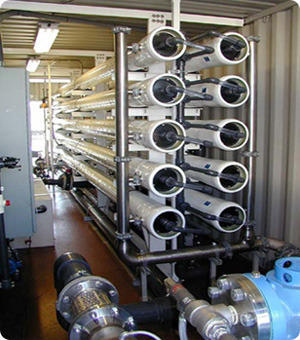
Reverse osmosis, also known as hyperfiltration, is the finest filtration available today. It is the most common treatment technology used by premium bottled water companies. It is effective in eliminating or substantially reducing a very wide array of contaminants, and of all technologies used to treat drinking water in residential applications, it has the greatest range of contaminant removal. Reverse osmosis will allow the removal of particles as small as individual ions. The pores in a reverse osmosis membrane are only approximately 0.0005 micron in size (bacteria are 0.2 to 1 micron & viruses are 0.02 to 0.4 microns).
There are two types of reverse osmosis membranes commonly used in home water purification products: Thin Film Composite (TFC) and Cellulose Triacetate (CTA). TFC membranes have considerably higher rejection rates (they will filter out more contaminants) than a CTA membrane, however, they are more susceptible to degradation by chlorine. This is one of the reasons why it is important that a reverse osmosis system include quality activated carbon pre-filters.
A typical RO system is composed of an array of granular activated carbon (GAC) pre-filters, the reverse osmosis membrane, a storage tank, and a faucet to deliver the purified water to your countertop. Reverse osmosis systems vary in membrane quality, output capacity, and storage capacity.
 |
Nipo Systems Pvt. Ltd.
All Rights Reserved. |